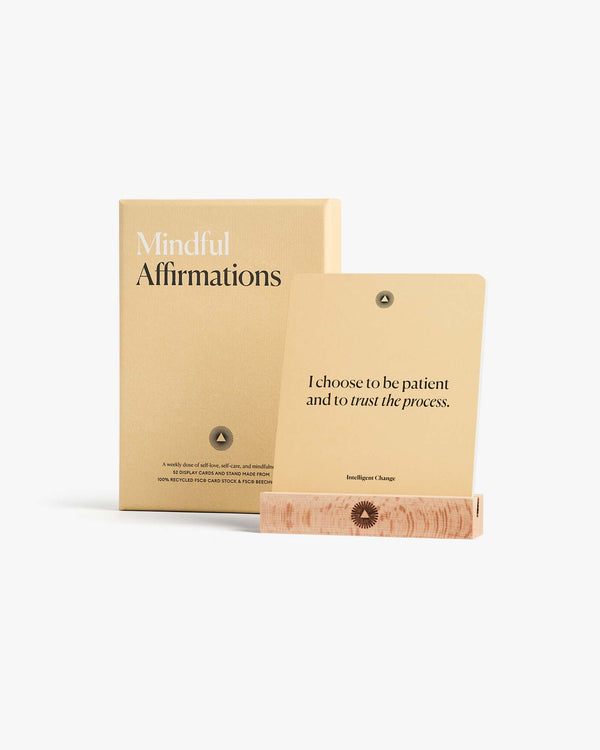Mindfulness Made Practical: Finding Your Path to Peace

In a world that never stops moving, the promise of mindfulness offers a rare refuge—a way to slow down, reconnect with the present, and cultivate a deeper sense of awareness. Yet, many find this concept more aspirational than attainable.
This guide aims to change this perception by showing that mindfulness is, in fact, a practical lifestyle choice that can enhance clarity, improve well-being, and foster a profound connection with your inner self.
What is mindfulness, really?
At its core, mindfulness is the practice of being fully present in the moment without judgment. It involves a conscious direction of your awareness away from automatic, multitasking patterns of thought, and towards a more attentive mode of being. This mental state of heightened awareness can significantly reduce stress, augment cognitive flexibility, and enhance both emotional and physical resilience.
Mindfulness is all about finding moments of presence throughout your day. By integrating mindfulness into your daily routine, you can transform ordinary activities into extraordinary opportunities for growth and self-discovery.
Mindfulness doesn't require silence, stillness, or even solitude—rather, it can be nurtured through simple acts performed throughout your day.
Mindful Walking
Transform your walks into meditative experiences. Mindful walking involves bringing your full attention to the act of walking. It's a way to ground yourself in the present moment, using the movement of your body to anchor your mind.
The practice of mindful walking provides a simple way to incorporate mindfulness into your daily routine. It helps reduce stress and anxiety, improve your concentration and focus, and enhance your mood and emotional regulation.
How to Practice Mindful Walking
- Start with your breath: Begin by taking a few deep breaths to center yourself. Focus on the sensation of the air entering and leaving your body.
- Notice your steps: Pay attention to the feeling of your feet making contact with the ground. Notice the lift of your foot, the movement through the air, and the placement back on the ground.
- Engage your senses: Expand your awareness to your surroundings. What colors and movements catch your eye? How does the air smell, and what sounds surround you? Try to experience these sensations without judgment, simply acknowledging them as they are.
- Stay present: If your mind wanders, gently bring your focus back to the act of walking. Use the rhythm of your steps as a guide.
Mindful Eating
Mindful eating transforms meals into a sensory experience, encouraging you to slow down and fully appreciate the food you consume. It's not just about what you eat, but how you eat.
Mindful eating can disrupt automatic eating habits and lead to a deeper understanding of your body’s hunger and satiety signals, enhancing your relationship with food and eating behaviors.
How to Practice Mindful Eating
- Prepare your meal with care: Start by preparing your food mindfully. Notice the colors, textures, and aromas as you cook.
- Sit down to eat: Avoid eating on the go. Sit down at a table, free from distractions like TV or smartphones.
- Engage your senses: Before you take your first bite, take a moment to appreciate the appearance and smell of your food. As you eat, pay attention to the flavors, textures, and temperature of each bite.
- Chew thoroughly: Chew each bite thoroughly and slowly. Notice the changes in texture and flavor as you chew.
- Listen to your body: Pay attention to your body’s hunger and fullness cues. Eat until you’re satisfied, not until you’re stuffed.
Mindful Listening
Often we listen only to respond, not to understand. Mindful listening involves fully focusing on the speaker, noticing their expressions, tones, and the emotions behind their words. You can practice mindful listening by focusing fully on the sounds around you, whether you’re in conversation or sitting quietly in nature. Notice the layers of sounds—distant noises, the closer sounds of human activity, and the subtle tones of your environment.
This practice improves your listening skills and deepens your relationships and connections, fostering empathy and understanding in conversations.
How to Practice Mindful Listening
- Be present: Give your full attention to the person speaking. Avoid thinking about your response or letting your mind wander.
- Listen without judgment: Try to listen without forming judgments or opinions. Simply absorb what the speaker is saying.
- Notice non-verbal cues: Pay attention to the speaker’s body language, facial expressions, and tone of voice.
- Reflect and respond: Reflect back what you’ve heard to ensure understanding. This shows the speaker that you’re truly engaged and values their input.
How to customize your path to mindfulness
To truly make mindfulness work for you, consider your individual lifestyle, preferences, and challenges. Here’s how you can tailor your mindfulness practice:
Set Personal Intention
Instead of vague goals like "be more mindful," set specific intentions such as "I will practice mindful listening during all my conversations today" or "I will engage in mindful walking every evening after dinner."
Choose Practices That Fit Your Routine
Identify parts of your day that could become more mindful. Perhaps it’s during your morning shower, your commute, or while doing household chores. Try different mindfulness practices to see what feels best. Whether it’s journaling, guided meditation, or mindful tea drinking, the key is to explore various forms until you find your fit. Mix and match mindfulness practices to keep your routine fresh and engaging.
Integrate Mindfulness Gradually
Incorporate small mindfulness exercises at different times of the day. Perhaps begin with a minute of mindful breathing before breakfast or a moment of gratitude before bed. You can also combine mindfulness with other activities you enjoy, like drawing, gardening, or exercising.
Anchor Your DayIdentify parts of your daily routine—such as brushing your teeth or drinking your morning coffee—as opportunities for mindfulness. These regular cues help make mindfulness a consistent part of your day. Remember, mindfulness is not a one-size-fits-all approach. Adapt your practice to suit your changing needs and circumstances.
Create Mindful Spaces
The key to benefiting from mindfulness is consistency. Integrating mindfulness into your daily life becomes more manageable when you establish dedicated spaces for practice. Designate certain areas in your home or office as mindful spaces for practicing mindfulness. These can be simple, uncluttered spaces that encourage calm and minimize distractions, making it easier for you to connect with the present moment.
______________
Imagine standing by the sea, watching the waves roll in smoothly, their foam lightly touching the shore before disappearing. This gentle, rhythmic motion of the sea and its foam is like mindfulness. It teaches us to be fully present, observing our thoughts and feelings as they come and go, just like the foam on the water. By watching the steady but ever-changing sea, we learn how to stay calm and adaptable in the face of life’s changes. Mindfulness, much like the sea, helps us navigate through each day with a clear mind and a strong sense of peace.
Mindfulness, once a spiritual practice rooted in ancient traditions, has now emerged as a key tool in the modern quest for calm. It all starts with a single, intentional breath.











